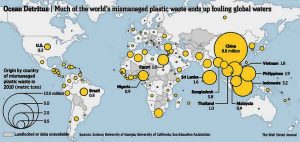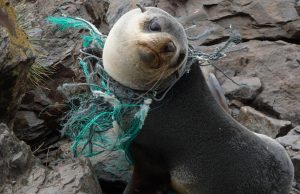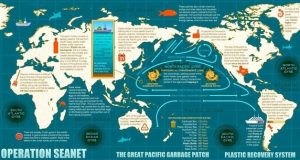Water Quality Association supports PFAS Plan for Drinking Water
EPA suggests consumers have water tested and use certified in-home filtration to remove or reduce levels of these toxic chemicals
LISLE, Ill. – The Water Quality Association supports the U.S. Environmental Protection Agency (EPA) taking steps toward setting a safety threshold for highly toxic drinking water contaminants known as PFAS. Acting EPA Administrator Andrew Wheeler on Thursday outlined a plan that addresses drinking water and cleanup concerns as well as monitoring of PFAS, expanding research and improving enforcement.
“We are encouraged that the EPA is continuing to move forward with establishing a consistent standard across the country for these dangerous chemicals,” said WQA Global Government Affairs Director David Loveday. “We strongly support the action plan’s recommendations that consumers have their drinking water checked by a certified laboratory and then use certified in-home filtration to remove or reduce any chemicals found.”
In September, a letter from WQA supporting further study of human health risks of PFAS contamination and using in-home treatment technologies to combat them was introduced into testimony before a U.S. House Energy and Commerce subcommittee. Research shows POU/POE treatment “can be used to successfully treat for these contaminants at the home or in a building,” said the letter from WQA Executive Director Pauli Undesser. “They cost only a fraction of the price our society would need to bear to upgrade our drinking water treatment plants for PFAS removal.”
Last May, Loveday and WQA Technical Affairs Director Eric Yeggy took part in the EPA’s PFAS National Leadership Summit, which called for a national management plan.
Per- and polyfluoroalkyl substances, known collectively as PFAS, are man-made chemicals found in such things as firefighting foams and stain-resistant, waterproof and nonstick coatings. Because they break down slowly, if at all, they have turned up in drinking water systems across the nation in varying levels. Some individual states have begun regulating the chemicals.
For individuals concerned about PFAS, the EPA Plan states:
“The EPA recommends contacting your state for a list of laboratories that are certified to test for PFAS using EPA Method 537. If you find PFAS in your drinking water, certain PFAS can be reduced or removed through the use of in-home point-of-use or point-of-entry water filters. It is important to keep in mind that any in-home treatment device should be certified by an independent party.”
In-home technologies such as reverse osmosis, carbon filtration and anion exchange have been independently tested and proven to be a successful final barrier to treat drinking water for PFAS.
WQA is a non-for-profit, accredited independent third-party certification body by the American National Standards Institute (ANSI) and the Standards Council of Canada. WQA’s website provides additional information on PFAS chemicals and product certification.
As part of its annual DC Fly-In and the Water Resources Congressional Summit on March 5 and 6, WQA members and staff will discuss PFAS in meetings with Congressional and federal agency staffs. Fly-In registration is open through Friday, Feb. 15.
WQA is a not-for-profit trade association representing the residential, commercial, and industrial water treatment industry. WQA’s education and professional certification programs have been providing industry-standardized training and credentialing since 1977. The WQA Gold Seal certification program has been certifying products that contribute to the safe consumption of water since 1959. The WQA Gold Seal program is accredited by the American National Standards Institute (ANSI) and the Standards Council of Canada (SCC).
pfas_fact_sheet_history_and_use__11_13_17
Water Testing Links
Microplastics in Bottled Water – New Study
Study Summary:
- “Tests reveal bottled water contains nearly twice as many microplastic particles per liter as tap water. The contamination is thought to originate from the manufacturing process of the bottles and caps
- Researchers tested 259 bottles of 11 popular bottled water brands for the presence of microscopic plastic. On average, the bottled water tested contained 325 pieces of microplastic per liter
- Only 17 of 259 bottles were found to be free of microplastic particles (5 mm and 0.003 mm), and none of the brands tested consistently free of plastic contaminants. The worst offender was Nestlé Pure Life, the most contaminated sample of which contained 10,390 particles per liter
- In response to these findings, the World Health Organization has vowed to launch a safety review to assess the potential short- and long-term health risks of consuming microplastic in water
- A report by the U.K. Government Office for Science warns plastic debris littering the world’s oceans — 70 percent of which does not biodegrade — is likely to triple by 2025 unless radical steps are taken to curb pollution.”
We recommend the following:
- Get Your Drinking Water Tested you must Know Your H20.
- Read our article on Plastics.
- Consider treating your existing tapwater .
- Microplastic Testing of Your Drinking Water.
NSF Intl. has developed a test method and protocol to verify a water treatment device’s ability to reduce perfluorooctanoic acid (PFOA) and perfluorooctane sulfonate (PFOS) to below the health advisory levels set by the U.S. Environmental Protection Agency (EPA).
[amazon_textlink asin=’B06XGZMTRH’ text=’P473: Drinking Water Treatment Units – PFOA and PFOS’ template=’ProductLink’ store=’webdespro-20′ marketplace=’US’ link_id=’b50a0a69-0f13-11e9-bbe7-ebfc03ac31a1′]
PFOS in Water – Is there are formal drinking water standard?
Source: New Hamphire Public Radio – 11/5/2018
“Right now, state regulators are doing something they’ve never done before: writing their own limit on a chemical contaminant in drinking water.
It’s called a maximum contaminant level, or MCL. In the past, like most states, New Hampshire has used federal standards as its default MCLs.
Now, the legislature has told the Department of Environmental Services for the first time to write its own MCL, from scratch.
It’ll require public water systems to routinely test and treat drinking water for four types of likely toxic PFAS chemicals – known as PFOA, PFOS, PFHxS and PFNA.
The MCLs will also become the state’s new ambient groundwater quality standard for the chemicals, meaning if cleanup will be required if they’re found in groundwater at a higher level.
Right now, the state uses the federal government’s advice of 70 parts per trillion as its groundwater cleanup standard. The state has no formal MCL for PFAS in drinking water.
The new MCL is expected to be more stringent than that EPA guidance, and will require costly new testing and treatment protocols for drinking water systems around the state.
PFAS, or per- and polyfluoroalkyl substances, were once common in a range of industrial and household products. They have been linked to serious health problems and have contaminated water supplies across the state and country……..”
Get Your Drinking Water Tested for PFOS/PFAS
Plastics – Stop Littering – We need to make a change !
by S. Oram (new blogger)
Where do you throw your plastics and trash when you are done with it? I would hope you say you RECYCLE ! Because just throwing that container away by mixing it with the normal trash or discarding out the window creates problems. Part of this problem is POLLUTION. This pollution creates visual aesthetic issues, but also damages habitat and threatens the land, air, and sea animals. Did you ever stop and think about how these things can affect the animals outside? Most plastic waste comes from third world countries especially in China, but we can still make a difference.
 https://goo.gl/images/38xfsv Online Source –
https://goo.gl/images/38xfsv Online Source –
In the 1970s, the National Academy of Sciences estimated about 45,000 tons of garbage and waste was being tossed and thrown in the ocean. Since initial estimate, it has gotten even worse. Many people throw things in the ocean and don’t think about the animals in it or the other uses downstream. The materials can get wrapped around the animals or some of the animals eat. The animals become hurt, sick, and die. Littering can kill marine life and destroy habits. Some people don’t stop to think about the animals and their safety. Over 100,000 marine mammals and 1 million sea birds are killed each year from plastic pollution and 6 million tons of debris, i.e., a ton is 200 lbs , enters the ocean each year. It is time to say – Enough!

Sad there is no reason to create this type of pain and suffering.
Did you know it can take up to 450 years for plastic bottles to decompose? This does not appear to be true. “Scientists Thought It Took Thousands of Years for Plastic to Decompose – It May Only Be Decades” and “A more recent study revealed that PET degrades more rapidly than previously thought in ocean water due to the presence of metal ions in the water. Fifty percent degradation was said to occur in 4.5 years and 100% degradation in 72 years.”
Where is most of this plastic? (Operation Seanet)
Here is a list of wastes that go in the ocean and how long it takes to decompose.
Foam cups and tin cans – up to 50 years.
Plastic bottles depending on type and environment could be up to 450 years (Source)
Fine fishing net up to 600 years (much longer for heavier nets).
Cigarette butts- 1 – 5 years.
Plastic bags- 10 – 20 years (Some putting this debris in a plastic bag is not good enough) . The bags breakdown and this it may take 100s of years for the content to decompose.
SO – Simply Bagging the Trash is Not a Solution and Putting the Plastic in a Landfill is the Wrong Choice. We must make every effort to recycle, reuse, and then put our young minds together and help to clean up our oceans, beaches, and landscapes and develop better solutions.
My call to action:
- Please think twice before littering and think twice before throwing stuff away, especially plastic bottles.
- Try Going Bottleless –We tried and we saved money.
- Pick up litter and Recycle – Participate in local clean up events.
- Try to kick the plastic habit.
- Check out Operation – Seanet
other Articles
PFAS Cycle – https://shop.knowyourh2o.com/blogs/news/pfas-and-forever-chemicals-a-new-man-made-cycle-the-pfas-cycle-that-must-be-broken
Plastics and the Environment – Debunking Myths and Responsible Practices
Wildlife and Lead Poisoning – Lead is not Just a Problem for Humans
Sources:
http://www.perseus-net.eu/site/content.php?locale=1&sel=517&artid=565
https://www.dpaw.wa.gov.au/management/marine/marine-parks-wa
http://www.bluebird-electric.net/oceanography/Ocean_Plastic_International_Rescue/Logistics_Recycling_Plastic_Ocean_Cleanup_Cargo_Operations.htm

